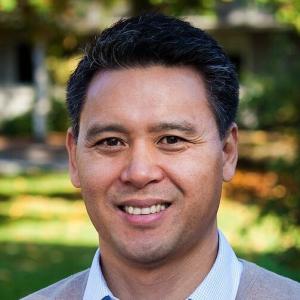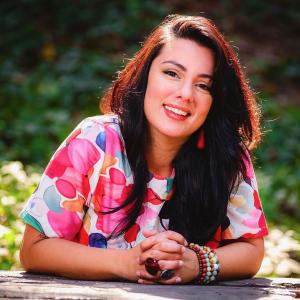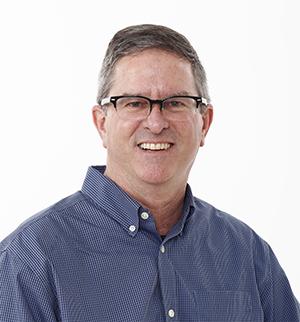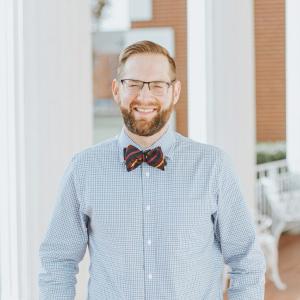Resources

I came across a book during graduate work whose title still haunts me: When Work Disappears by William Julius Wilson (Alfred A. Knopf, 1996). The book is not without controversy as it argues how poverty came to exist in west Chicago because of manufacturing company flight. I am not writing, however, to discuss this argument or its controversy. I am writing about the title, which I cannot shake. It feels all too real; it is all too real for so many of us in theological higher education. This morning, I had a conversation with a good friend of mine, a colleague at another institution with whom I have walked during the last fifteen years in this field. They, unlike many aspiring and newly-minted PhDs, have full-time work. But they, like many PhDs already in the field, face the harrowing prospect of needing to find work elsewhere if they are going to make a living wage. It feels like a sucker punch to the gut when you confront the likelihood of needing to find work in a field that seems to get smaller by the year. You have trained numerous years only to be left facing the reality that full-time work is disappearing, and you wonder if a vocation can be had in a profession and field such as ours. I have more questions and curiosities than I do answers or proposals. Undoubtedly, you are reading this as I am writing it, with wheels turning about different macro-analyses and complexities to explain this upheaval: decreasing involvement in organized religion, generational attitudes towards the cost-value of (theological) higher education, the return on investment of this kind of education in future employment, and so on. This is not a tidy blog post that looks for answers or surefire solutions to very legitimate and far-reaching concerns. The primary intent of raising this topic is that I want to name publicly what many of us feel privately or at least discuss in smaller circles with trusted people. Our collective grieving is happening whether we widely acknowledge it in our respective learning communities, institutions, and guilds or not. Of course, there are theological academic institutions which will survive all of this. The financial wealth of some institutions, coupled with the social investment and concern for keeping these institutions alive, will help them weather the changes in the field. Innovative curriculum and flexible pedagogy might even stave off closure. These are promising trajectories. I wonder, though, how educators collectively, and individually, continue to keep vocation alive when they see their work disappear. Let me put it directly: When you lose (or are on the verge of losing) your faculty position or see colleagues lose theirs, what does this do to your vocation? There are many reasons why we get into the profession of teaching, mostly noble ones. I imagine that, at the heart, we get into teaching and become educators because of vocation. There is something in us that comes alive when we make an impact on the world and people through our teaching and scholarship. What then do we make of our vocation when our professional opportunities close? I do not ask this from afar. I experienced the disheartening reality of a school closure. I have worked on a vocational statement for the last thirteen years. I come back to it every so often as a probing and aspirational exercise. I ask whether this statement continues to describe who I am (probing), while I also look to the statement to guide me in who I am becoming (aspirational). After many revisions and wording changes, the commitment remains the same: my center, call, vocation, and fuel, is to help people live flourishingly. This is more challenging in today’s landscape because work is disappearing. I am adjusting as many of you are too. Checking in with a colleague, serving as a reference for someone doing all they can to secure a position, and having truthful conversations with colleagues as to why you voted to close the degree program they oversee—these are ways to currently express our vocation. There are other small and significant ways you and I keep vocation going. These are not novel ideas, but they take on a deeper quality because of the severe reality that collectively faces us. And if there is a shared vocation in theological higher education today when work disappears, perhaps this is it: that amid our vocation to teach and form is also a vocation to grieve loss in our field and to humanize people who make up and (hope to) carry out the field.
Rather than repeating sounds made long ago by those who mastered academic fields, what must we now do to produce new knowledges? From where will our confidence and agency come to create ways of knowing fashioned for the complexity of pluralism? What new stories will we metabolize for the better formation and preparation of students? How do we teach differently than we were taught?

In Por Uma Educação Romantica (Papirus, 2003), Rubem Alves speaks about how he found his way to poetry. He describes how woundedness he experienced in life made him understand that literature, poetry, music, storytelling, and the visual arts were not only nutrients for violated and hungry bodies but also joy for anguished souls. He writes: “Science is fire and pans, indispensable kitchenware. But poetics is chicken and okra, delectable food for those who love this dish.” As an educator, storyteller, and world-maker, he was a compulsive fruidor de vita—he conjured new life into being. We have reached the end of a fourth semester touched by an ongoing pandemic that has brought so much loss and grief. Our families, our communities, and our learning spaces are filled with bodies that are carrying an overlay of stories, experiences, and memories that feel like webs spun out of un-rootedness, pain, and trauma. And I have been asking myself how to begin to undo the trauma that we have all metabolized. How can we redesign our classroom encounters, rituals, spiritual practices, and ways of knowing? How can we experiment with other ways of being, invent other vocabularies and grammars, other corporeal practices for grounding, creativity, and connection? I believe Rubem Alves would invite us to pay attention to the spaces where poetic inventions emerge—spaces of art making that are ripe with the potential to smuggle life, joy, and creativity back into these many landscapes of death. What kind of potent conjuring could happen if we cleaned our brushes, wiped our camera lenses, heated our welding tools, recovered our songs, dusted our instruments, located our yarn, filled our confined spaces with pulsating bodies that are not afraid to reinvent erotic grammars of playfulness and ritual, to heal these wounds? Art, as a way of feeling, knowing, and healing allows us to access what is hidden within our most intimate recesses. What our busy minds want to forget, our embodied artistic practices tend to re-member. From rage to grief to wonder, the arts help us touch, sense, and name our emotions and educate our affections while inspiring us to resist, denounce, agitate, heal, connect, and generate tools for speculative imagination, for integration of embodied, emotional, and intellectual knowledge. When we immerse ourselves in acts of creation, we have access to the visceral, the somatic life of the body: its reflections, limits, intuition, answers, desires, and needs. Through artistic languages, we can begin to weave the invisible back into the perceptible. Art also has the power to evoke, to create other possible worlds. And because of art’s power to provoke, we are able to sit with the trouble, to lean into instability, to practice unlearning, and to affirm our inherent capacity to be at once problematic and prophetic. In a way, and as Alves proposes, the arts remind us of the life that is buried beneath the weight of our responsibilities, our angst, and our pain. Sometimes, Alves affirms, life has to lay dormant for years, buried within our sepulchers… Sometimes life only has a chance after death. So, in the midst of the death that surrounds our days, weeks, and months, and the millions of lives lost to COVID-19, I share with you the work of an artist whose work has activated my classroom, reanimating and mobilizing teacher-learners to create otherwise, even in the face of impossibility. vanessa german describes herself as “a citizen artist who centers the exploration of human technologies that respond to the ongoing catastrophes of structural racism, white supremacy, heteropatriarchy, resource extraction, and misogynoir.” german’s work ranges from sculptures to performances, rituals, processions, installation, photography, and much more. As a way of sentir-pensar of the world, german’s work seeks to “repair and reshape disrupted human systems, spaces, and connections.” Her practice also engenders new models for being and becoming in the world that incorporate healing, creativity, tenderness, and collectivity to address our society’s most pernicious violences. In the work entitled Blue Walk, curated by Wa Na Wari, german staged what she named “” In the context of this pandemic and the interlocking systems of oppression, german’s performance invited participants to acknowledge “the holiness of the Black body on the living planet as a healing channel of release and power.” Performers touched, sensed, shared, and metabolized experiences of rage, grief, tenderness, laughter, and the need to rest. This particular pilgrimage was staged in September, during the Time-based Art Festival organized by the Portland Institute of Contemporary Art. Participants were invited to walk “in the power of the Blues. Moving in the power of Water, Creativity, and Dimensional Wholeness. The Ritual is the Goodbye Song and The Lifting Up Song. We learn this in a short period of togetherness pre-ritual. These songs are about listening, giving permission to the voice and the body, and taking up space and sky.” vanessa german’s potent performance enfleshes art as a way of feeling, knowing, and healing. Through storytelling, mixed media, assemblage of bodies, and textile, german mediates ritual and collective acts of togetherness to reclaim the right of Black people to share in power, spirituality, and presence. Non-Black participants are invited to witness, to be mindfully present, and to confront the ways in which we internalize and externalize anti-Blackness in our relations and lives. Collectively witnessing the work of artists such as german opens up a “capacity to relate deeply and respectfully across differences,” while maintaining a “receptivity to the unknown,” to borrow Laura Pérez’s language (Eros and Ideologies [Duke University Press, 2019] xx). Inherently polyvalent, these works have a tremendous power to connect, reverberate, and reveal what is hidden within our interiority. As sites for world-making and choreographing new possibilities of being, feeling, knowing, and healing, the visual arts can cultivate in us an orientation and openness toward wonder, mystery, and that which we have othered, forgotten, disposed of, or violenced. This pandemic, the ensuing uprisings, and the incapacity of governments to decently respond to the urgencies of our times have impacted us in ways that we cannot fully grasp at the moment. By inviting these works of art into our classrooms, learning communities, and academic spaces, I believe we can conjure new possibilities of life that allows us to sense and comprehend the world differently—even in the face of impossibility, interruption, and derealization. Works like Blue Walk are, indeed, nutrients for violated and hungry bodies as well as joy for suffering souls. *Photos by Tojo Andrianarivo. vanessa german, Blue Walk, curated by Wa Na Wari, September 2021, Portland Institute of Contemporary Art.
Being a critical reflective teacher means grappling with our own miseducation. Colleagues who have been proactive about the necessity of aligning teaching content, institutional mission and values with teaching approaches and methods share their strategies. If teaching is not politically neutral, then what practices can we employ to lessen the oppression and violence in our classrooms?

How fitting it is that as I began the final edits on this post, I ended up clenching my jaw, tensing my shoulders, and generally doing just the opposite of what I’m trying to say in this piece. My goal is to bring the benefits of self-care into the classroom. Self-care are two words I don’t use. But, fifteen years ago a Wabash Center mentor said, “You are really good at self-care.” My modes of self-care have morphed over the years, and now the main one is my visual art practice. What I am considering now are ways to facilitate artistic self-care among students. What might it look like to create space in classrooms for students to make art as a way of learning religious studies? How might students not only learn religious studies, but have the learning experience mimic the calm, creative moments of making art? I’m not saying that art is just about feeling good; no, it’s hard work, but a very different type of work than writing papers. I didn’t grow up drawing a lot, but I majored in art, sort of, and then dropped it after a year. The last two summers, I focused intensively on developing my art practice. Rather than thinking, “I really should be doing something else with my time,” I thought about how my linework asked questions; how the calming effects of artistic processes opened space to imagine my art as doing research. Of course, there would be a written element, but the art itself became the primary source for the writing. I was also preparing for my first solo gallery show, which was on hold for more than a year due to COVID-19. My research/artmaking for the show began with the question, “What would it be like to draw as a Buddhist?” Obviously, that question simply leads to innumerable other questions, but that’s part of the point: the merging of drawing and doing research. During my artist talk, I was describing the central piece—a five-by-ten foot vertical triptych—when I spontaneously blurted out, “This is not a hobby. This is who I am at the core of my being.” My next thought was, “Whoa. Where did that come from?” That moment solidified my resolve to facilitate similar experiences in the religious studies classroom. Yes, I’m dreaming a bit here, but it’s a dream I’m actively pursuing. I named the triptych, “Forgetting the Ox,” which is the seventh of ten stages on the path toward enlightenment, according to the Ten Ox-herding Pictures commonly used in Zen. My drawing illustrates—rather loosely—some parallels between my becoming an artist and the struggles of the ox-herder in locating his “true nature.” It didn’t take long for me to imagine an entire course designed around art-making as doing religious studies. I already regularly have students draw their metaphor of being a college student, their religious or moral autobiography as a one-page, six-panel comic, or an image of the Buddha without looking at reference material. These exercises feel like “easy days” from a student’s perspective. Honestly, sometimes these exercises feel like I’m not really teaching. But there is plenty of learning taking place: students relax, laugh, tell stories about their religious upbringing, and gain confidence in sharing more of themselves as they describe their drawing to their classmates. The metaphor drawing, in particular, leads to students taking risks and becoming vulnerable; for many this is their first time drawing anything in years. Class becomes self-care, if only for a short time. So why not build upon those experiences to learn course material, moving well beyond personal metaphors? What if, for instance, in order to learn about Buddhism, students were to create a series of images of the Buddha? In the process, they would make new connections to the course, and likely retain information far longer than normal. Plus, they would add the somatic/artistic element. I’m not ready to forgo writing assignments, but the writing would now incorporate a discussion of their artwork and how it integrated with their research. My own metaphor as a professor is radically different from the one I drew many years ago in a Wabash Center pre-tenure workshop. At the time, my drawing depicted a long winding path filled with obstacles. Today, I would draw a group of students on winding paths, with me off to the side, in awe of their creativity, ready to help them figure out their paths for themselves. The new metaphor is less about me, and more about empowering students as they create their own journey of self-discovery.
Personal reflection on issues of prejudice, bias, and cultural insensitivity is key to improving teaching. At any season of the teaching career new considerations for equity is possible. This conversation with the author of White Christian Privilege: The Illusion of Religious Equality in America challenges our vocational, curricular, and personal conventions and suggests resources for social justice standards in teaching.
Accepting applications through December 15, 2021 Early Career Religion Faculty Teaching Undergraduates Early Career Theological School Faculty Faculty of African Diaspora Workshop Mid-Career Faculty Teaching at Evangelical Theological Schools and Seminaries

The COVID-19 pandemic has had untold impacts on our shared work of teaching and formation. For those whose institutions have continued in-person instruction, no matter the degree of precaution taken, the risks of transmission have added fear, stress, and uncertainty to teaching contexts that already include significant challenges (which I need not enumerate here). Our challenging circumstances have also provided unique opportunities, though. And many have responded with admirable flexibility and resiliency. I have heard inspiring stories from friends and colleagues who have been able to facilitate safe learning and are sometimes even thriving, within the constraints and possibilities of our specific situations. I always have butterflies when a new school year begins, but in August of 2020 I felt paralyzed. How could I ensure that I was doing everything I could to keep my students safe while also facilitating the possibility of learning and growth within the unique stressors of the moment? I decided that, as long as I could ensure accessibility, all of my classes would meet outside, weather-permitting, as often as possible. In this first blog (of three), I will introduce the practice of outdoor teaching and reflect on its significance for theological education in our current circumstances. Two subsequent blogs will explore significant experiences and takeaways from my own outdoor instruction since August of 2020.[1] As I noted above, my fundamental motivation for outdoor teaching was to ensure a safe learning space. To be sure, walls and a ceiling offer safety and protection from the elements. When indoor spaces become places of more significant risk, though, we can experience what is normally protective as oppressive. The masks and distancing required for safety in enclosed spaces also raised literal barriers to communication and to nurturing the sense of community which I strive to facilitate for my students. Meeting outdoors allowed us all to breathe more freely, and in turn, to communicate and cultivate community more intentionally and with greater effect than would have been possible behind masks, socially distanced, and wary of the threat of a pathogen spread much more easily in enclosed spaces. Outdoor education has a long and storied history. While it has not always been adequately inclusive in western contexts, indigenous peoples have long emphasized the importance of learning within, and from, places of inhabitance. Our current climate crises demand that educators in theology and religious studies intentionally practice and foster connections with our more-than-human natural world for the sake of its well-being and for the sake of our own survival. Such intentionality is a matter of spiritual, religious, and moral concern for me as a Christian theologian. Though I have yet to teach a course directly on issues of creation care, teaching outside has already provided me with countless opportunities to connect my students to the natural world. Aside from providing an occasion to help meet the exigencies of responsible stewardship and living justly in creation, I have found that outdoor teaching is profoundly humane. Our built environments have the potential to make us forgetful of our dependence, contingency, and even capacities for embodied learning. However, as Jennifer Ayres writes, “When learners are invited outside the four-walled classroom, . . . their sensory experience of nature, particularly when paired with caring mentors who can accompany the learners as they make sense of their experience, can be transformative.”[2] When we resumed face-to-face instruction in the fall of 2020, I told my students that I suspected that our shared work together during the 2020-2021 school year would likely make for the most challenging and most poignant year of their educational journey. It was certainly the most difficult and most transformative school year yet for me. Teaching outdoors has provided me countless opportunities to reassess and improve my abilities to empower and instruct my students, to discover and promote cross-curricular and intellectual, moral, and practical connections, to appreciate the privilege of the work that I am able to do, and to marvel at and encourage the courage, attentiveness, resiliency, and creativity of my students. Though the uncertainty of the pandemic continues—I write these words just days after the discovery of the Omicron variant—because of the countless benefits both I and my students have experienced in classrooms without walls, I cannot imagine going back inside again full-time. I will be relieved if and when we are all able to breathe, speak, and listen more freely indoors, but all of my future teaching will include the fresh air of my classroom without walls. [1] I am grateful for the opportunity to share what I have learned in the hopes that others might benefit. That said, I must acknowledge that the privileges of my embodiment (as a cisgender white male) and my institutional circumstances (a campus with infrastructure amenable to outdoor instruction) mean that what I have been able to do may not be possible for others. Even so, the experience of meeting outside has reminded me of things I had forgotten and taught me new things about pedagogy that are worthy of consideration, even for those unable to teach outside. [2] Jennifer R. Ayres, Inhabitance: Ecological Religious Education (Waco, TX: Baylor University Press, 2019), 76.
Decolonizing teaching is an experiment in synergism. In developing new pedagogies, we can only guarantee crisis – crisis to reconstruct identities of the teacher and the learner, alike. What would it be to teach in a way that taboos, barriers and boundaries become meeting places? How will we learn to collaborate, build coalitions, and create partnerships for new epistemologies?